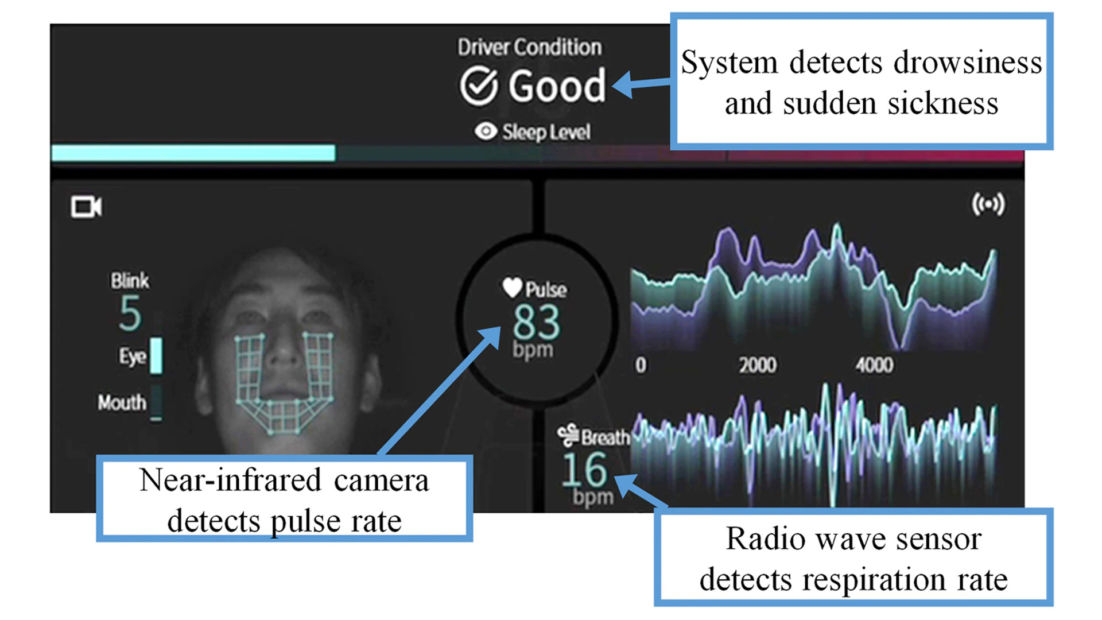Mitsubishi Monitoring detects Driver Illness
- January 17, 2022
- William Payne

Mitsubishi Electric has unveiled an Advanced Driver Assistance System (ADAS) that detects and monitors the physical condition of a vehicle’s driver and occupants to promote safe vehicle operation.
Among the system’s safety features is a Driver Monitoring System (DMS) that senses a driver’s heart rate and responsiveness. When alertness levels drop too low or the driver’s physical condition suddenly changes due to sleep, a seizure, heart attack or stroke, the DMS sounds an alarm. If the driver remains unresponsive, the system then notifies a support centre that can trigger the vehicle to stop on the shoulder to prevent accidents.
The ADAS functionality is featured in a concept car called the Mitsubishi EMIRAI xS Drive which is equipped with near-infrared cameras and radio-wave sensors to monitor the driver and passengers.
“Enabling safe, convenient and sustainable transportation of people and things is one of our key areas of focus at CES under our Mobility pillar,”
“Our DMS plays a critical role in enabling a people-centric smart society that promotes the health and safety of individuals and families,” said Mark Rakoski, vice president of advanced engineering at Mitsubishi Electric Automotive America (MEAA).
According to Rakoski, the DMS is especially important with the evolution of autonomous driving. With standard driving, if a driver experiences a health problem and becomes impaired, that person may be able to pull over to the side of the road and get help from passers-by. When driving autonomously, if a lone driver has a health problem and loses consciousness, the vehicle may continue to its programmed destination without stopping. In this case, an alert to a support centre can mean the difference between life and death.
The new Mitsubishi ADAS system offers other safety-oriented features that include departure preparation technology that ensures driver and passengers’ readiness to travel; occupant detection that prevents infants, small children or pets from being left in a vehicle; and night-time driving features that control a vehicle’s lights (e.g., intensity, throw distance) and initiate warning sounds when approaching objects are detected.




